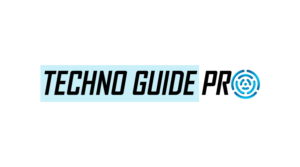Data security has undergone major transformations in the 21st century as technology has advanced rapidly. From the rise of cloud computing to increased connectivity through mobile devices and the Internet of Things (IoT), both opportunities and risks have grown when it comes to protecting sensitive information. Tracing the evolution of data security helps illustrate how approaches have had to adapt to an ever-changing landscape.
The Early 2000s: Building Firewalls
In the early 2000s, most data security focused on perimeter defense with firewalls and anti-virus software on individual devices. The priority was keeping threats out of private networks where valuable information lived. Nevertheless, these tools had limitations when faced with insider risks like human error or more sophisticated, targeted attacks. Still, firewalls and anti-virus measures represented a first line of defense during this period.
Mid 2000s: Growth of Cloud and Mobile
By the mid-2000s, major shifts were occurring as cloud computing services offered new storage solutions online. This added accessibility and flexibility for data storage, but also potential vulnerabilities by having information reside outside traditional network perimeters. Additionally, mobile devices like smartphones and laptops increased remote access capacities while decreasing oversight and control. Standard firewalls and anti-virus programs were ill-equipped for these changes, forcing new approaches.
Late 2000s: Data Encryption and Security Layers
In response to cloud growth and mobile access, encryption methods like hashing and tokenization emerged to protect sensitive data itself. That way, even if perimeter defenses failed, encrypted data would remain secure. Additionally, the concept of defense-in-depth layers took hold to provide fail-safes if any one measure got compromised. More attention also focused on managing identities and access with 2-factor authentication and strict permission policies around who could view or alter data.
2010s: Cyber Threat Intelligence and Analytics
By 2010, cyber-attacks had grown extremely advanced, using customized malware, social engineering tactics, and hacking exploits that easily bypassed traditional security tools. In turn, cyber threat intelligence and analytics capabilities were developed to study attack patterns, monitor networks for odd activity, provide real-time alerts, and predict where vulnerabilities may reside across systems. This moved data protection from reactive to proactive approaches.
Today: Adoption of Cloud Protection and Zero Trust
The pros at Hillstone Networks explain that many current data security frameworks revolve around cloud protection services and zero-trust architectures. Cloud access security brokers (CASBs) oversee all cloud activity, encrypting data and blocking unwanted actions. Meanwhile, zero-trust network access assumes that no users, devices, or workloads are inherently trustworthy, requiring continuous authentication and authorization. This limits damage from compromised credentials or insiders gone rogue. Machine learning also assists modern cybersecurity analysis for faster threat detection and automated response capabilities.
The Future: Persistent Innovation Needed
As technology persistently evolves with new capabilities and risks, data security must remain agile and innovative to adapt accordingly. This will likely include advances in areas like homomorphic encryption for secure cloud computations, micro-segmentation tactics within systems and networks, as well as increased used of biometrics, secure processors and hardware-enhanced security overall. Being proactive and viewing security as an ongoing process rather than a onetime fix will grow more important than ever.
Conclusion
From firewalls and anti-virus tactics to cloud protection services and zero-trust architectures along with advanced analytics and AI integration, data security has dramatically scaled up to today’s digital landscape. This steady evolution must persist just as rapidly into the future with ongoing innovation as data storage, access and applications present fresh opportunities for businesses and new challenges for keeping information safe and protected against unauthorized access or abuse. Prioritizing more layers of defense, real-time threat monitoring, encryption by default, and least-privilege access models allows modern data security frameworks to lock down sensitive materials in the 21st century.





